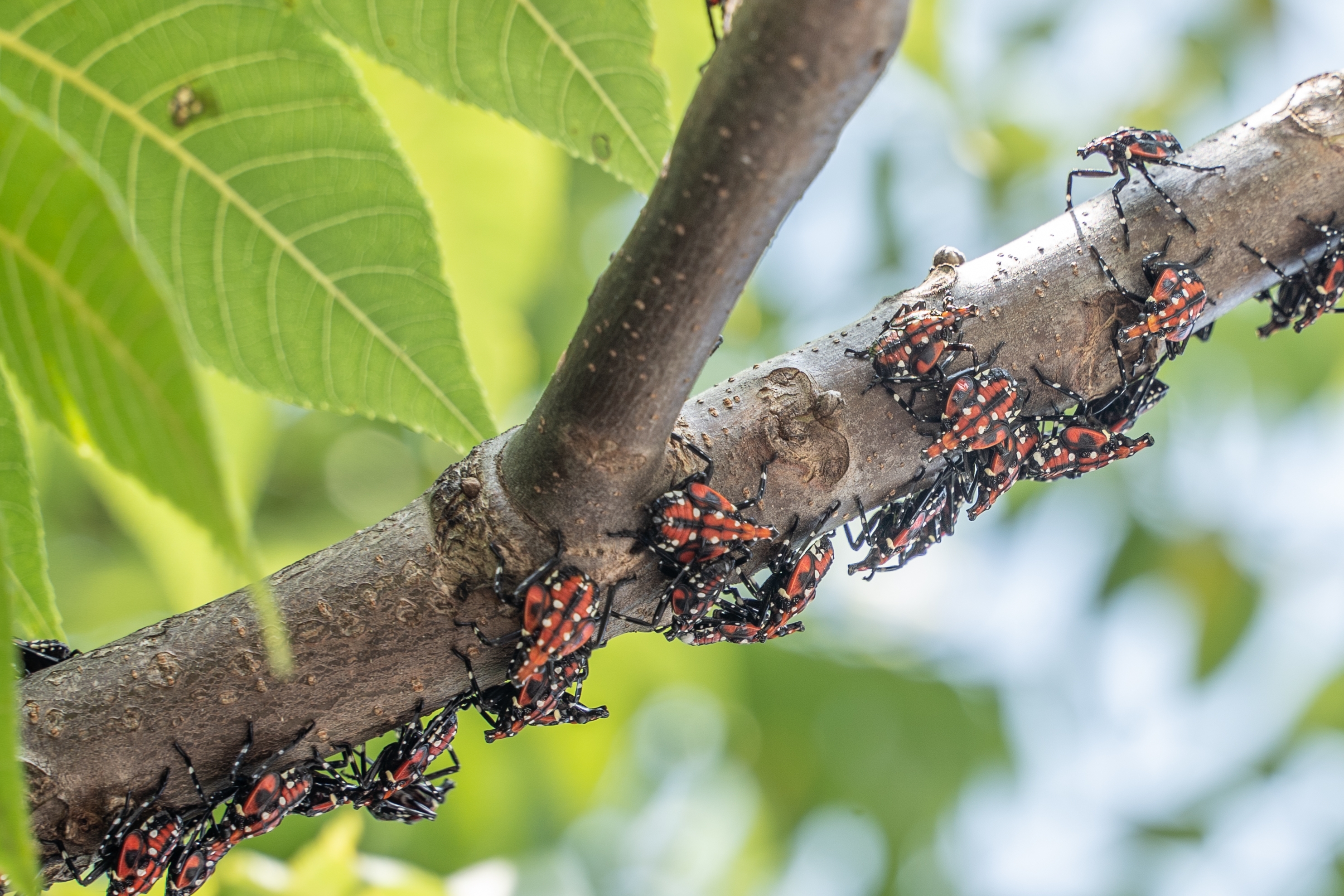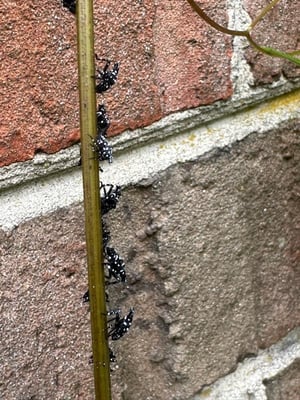Stopping Spotted Lanternflies Early

Neither a butterfly nor a moth, the spotted lanternfly is classified as a "hopper" that grows wings only when mature. Female spotted lanternflies lay eggs between September and November that begin hatching in April. Immature spotted lanternflies look like large black ticks with white dots on their bodies. By July, their bodies are red and remain dotted with white spots. In August, they reach adulthood and develop wings.
One of the more serious invasive pests, originally from China, spotted lanternflies have powerful mouthparts that pierce and suck the sap from nearly 100 different types of plant species that we are aware of. The spotted lanternfly is a real threat to the agricultural industry because of its distinct preference for grapevines, black walnut trees, and fruit trees. They also target maple, willow, and birch trees that are particularly vital to supporting local wildlife and the fragile ecosystems they inhabit.
A study published by Penn State concluded that if spotted lanternfly population control efforts aren't successful, this small but dangerous hopper could cost the state of Pennsylvania over $300 million each year in agricultural losses. Spotted lanternflies are also found in significant numbers in Delaware, Maryland, and New Jersey.
 Spotted Lanternfly Treatment: How To Stop Spotted Lanternflies from Destroying Plants and Tree
Spotted Lanternfly Treatment: How To Stop Spotted Lanternflies from Destroying Plants and Tree
Getting rid of spotted lanternflies as quickly as possible is critical for preventing irreversible damage to vegetable gardens, flowers, trees, and other yard life. When spotted lanternflies feed on sap, they release a sweet, sticky substance called honeydew that promotes mold and fungi growth on plants.
Here are three DIY treatments for deterring spotted lanternflies:
- Spraying a mixture of water and dish soap on lanternfly nymphs kills them quickly. It also has the added benefit of not being harmful to trees. However, this treatment is only good for an immediate effect. It has no residual impact that will affect lanternflies who come later. Also, don't leave dead lanternflies lying on plants, trees, or outdoor furniture. They leave mold-attracting stains due to the honeydew they secrete.
- Use a shop vac to suck up large populations of immature spotted lanternflies that can't fly yet. Be aware that these nasty hoppers have eyes on the sides of their heads and can see a predator or human approaching them seconds before they can be caught. Approaching them from behind is recommended. You have to be quick to catch these bugs!
- If you find a spotted lanternfly egg mass in the fall, remove the mass and submerge the eggs in 70 percent isopropyl alcohol. You can also scrape the mass onto the ground and step on them repeatedly until all eggs have been thoroughly smashed. Viking pest offers free spotted lanternfly egg removal cards on our website.
Call a Professional Spotted Lanternfly Exterminator for Guaranteed Results
DIY spotted lanternfly treatment may or may not work as well as you want. Play it safe when it comes to your landscape plants, gardens, or lawn foliage, and call Viking Pest today at 800-618-2847 to eliminate your spotted lanternfly infestation.
Viking Pest offers a variety of treatment options for ridding your home or business of spotted lanternflies and other pests. Our Spotted Lanternfly treatments were rated best in the country by Real Simple Magazine.
When you schedule an appointment for spotted lanternfly treatment, we will arrive on time, inspect the area where you found spotted lanternflies, and enact our award-winning proven treatment plan to eliminate destructive spotted lanternfly populations.











